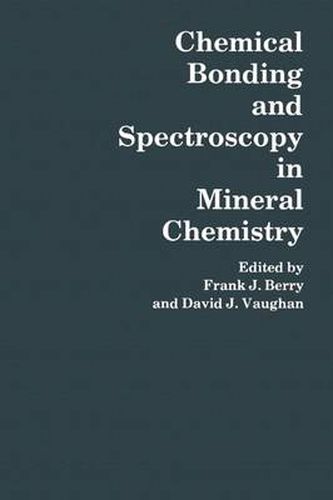Readings Newsletter
Become a Readings Member to make your shopping experience even easier.
Sign in or sign up for free!
You’re not far away from qualifying for FREE standard shipping within Australia
You’ve qualified for FREE standard shipping within Australia
The cart is loading…






This title is printed to order. This book may have been self-published. If so, we cannot guarantee the quality of the content. In the main most books will have gone through the editing process however some may not. We therefore suggest that you be aware of this before ordering this book. If in doubt check either the author or publisher’s details as we are unable to accept any returns unless they are faulty. Please contact us if you have any questions.
In recent years mineralogy has developed even stronger links with solid-state chemistry and physics and these developments have been accompanied by a trend towards further quantification in the theoretical as well as the experimental aspects of the subject. The importance of solid-state chemistry to mineralogy was reflected in a symposium held at the 1982 Annual Congress of The Royal Society of Chemistry at which the original versions of most of the contributions to this book were presented. The meeting brought together chemists, geologists and mineralogists all of whom were interested in the application of modern spectroscopic techniques to the study of bonding in minerals. The interdisci plinary nature of the symposium enabled a beneficial exchange of information from the various fields and it was felt that a book presenting reviews of the key areas of the subject would be a useful addition to both the chemical and mineralogical literature. The field of study which is commonly termed the ‘physics and chemistry of minerals’ has itself developed very rapidly over recent years. Such rapid development has resulted in many chemists, geologists, geochemists and mineralogists being less familiar than they might wish with the techniques currently available. Central to this field is an understanding of chemical bonding or ‘electronic structure’ in minerals which has been developed both theoretically and by the use of spectroscopic techniques.
$9.00 standard shipping within Australia
FREE standard shipping within Australia for orders over $100.00
Express & International shipping calculated at checkout
This title is printed to order. This book may have been self-published. If so, we cannot guarantee the quality of the content. In the main most books will have gone through the editing process however some may not. We therefore suggest that you be aware of this before ordering this book. If in doubt check either the author or publisher’s details as we are unable to accept any returns unless they are faulty. Please contact us if you have any questions.
In recent years mineralogy has developed even stronger links with solid-state chemistry and physics and these developments have been accompanied by a trend towards further quantification in the theoretical as well as the experimental aspects of the subject. The importance of solid-state chemistry to mineralogy was reflected in a symposium held at the 1982 Annual Congress of The Royal Society of Chemistry at which the original versions of most of the contributions to this book were presented. The meeting brought together chemists, geologists and mineralogists all of whom were interested in the application of modern spectroscopic techniques to the study of bonding in minerals. The interdisci plinary nature of the symposium enabled a beneficial exchange of information from the various fields and it was felt that a book presenting reviews of the key areas of the subject would be a useful addition to both the chemical and mineralogical literature. The field of study which is commonly termed the ‘physics and chemistry of minerals’ has itself developed very rapidly over recent years. Such rapid development has resulted in many chemists, geologists, geochemists and mineralogists being less familiar than they might wish with the techniques currently available. Central to this field is an understanding of chemical bonding or ‘electronic structure’ in minerals which has been developed both theoretically and by the use of spectroscopic techniques.